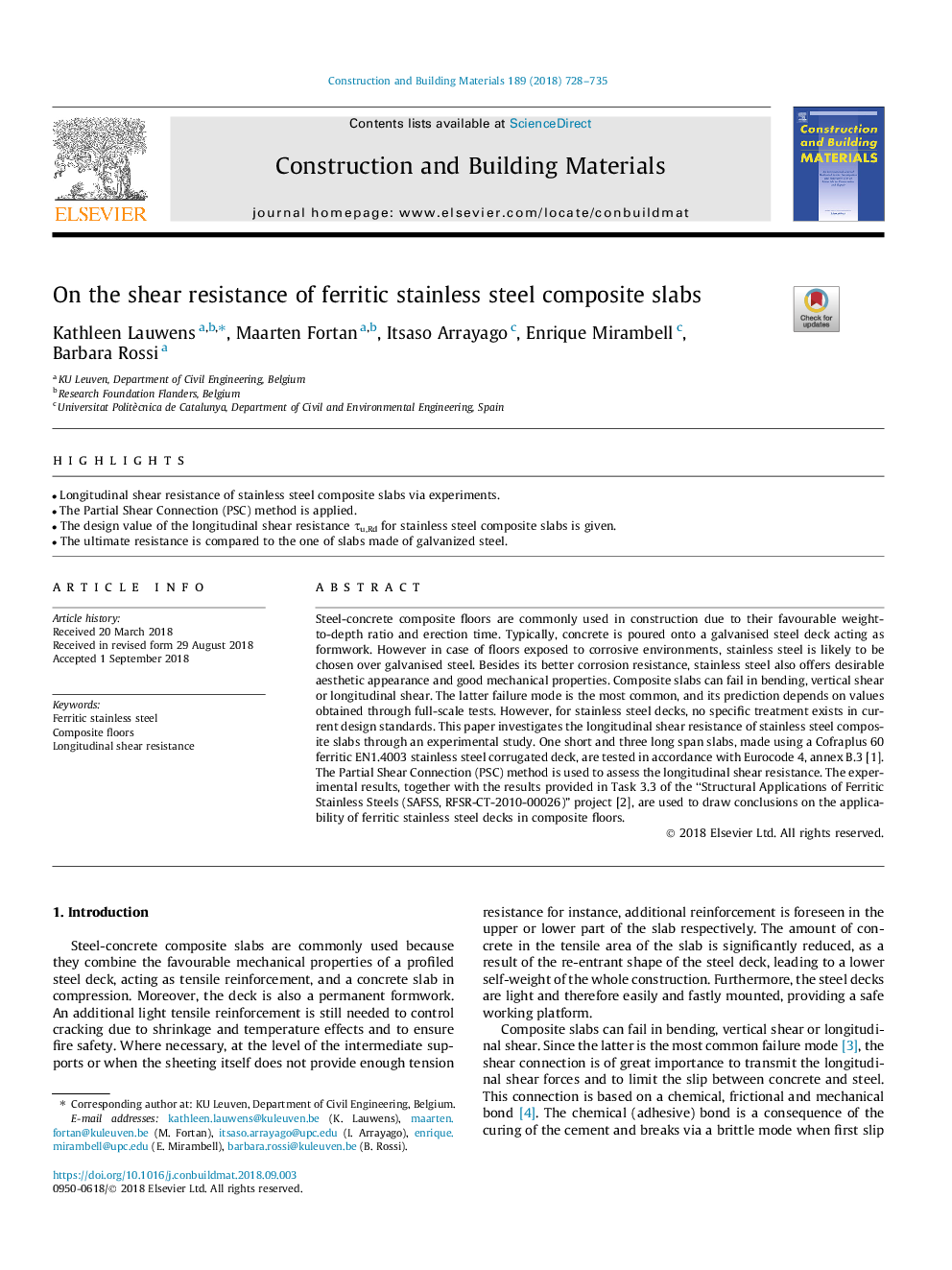| Article ID | Journal | Published Year | Pages | File Type |
|---|---|---|---|---|
| 10145741 | Construction and Building Materials | 2018 | 8 Pages |
Abstract
Steel-concrete composite floors are commonly used in construction due to their favourable weight-to-depth ratio and erection time. Typically, concrete is poured onto a galvanised steel deck acting as formwork. However in case of floors exposed to corrosive environments, stainless steel is likely to be chosen over galvanised steel. Besides its better corrosion resistance, stainless steel also offers desirable aesthetic appearance and good mechanical properties. Composite slabs can fail in bending, vertical shear or longitudinal shear. The latter failure mode is the most common, and its prediction depends on values obtained through full-scale tests. However, for stainless steel decks, no specific treatment exists in current design standards. This paper investigates the longitudinal shear resistance of stainless steel composite slabs through an experimental study. One short and three long span slabs, made using a Cofraplus 60 ferritic EN1.4003 stainless steel corrugated deck, are tested in accordance with Eurocode 4, annex B.3 [1]. The Partial Shear Connection (PSC) method is used to assess the longitudinal shear resistance. The experimental results, together with the results provided in Task 3.3 of the “Structural Applications of Ferritic Stainless Steels (SAFSS, RFSR-CT-2010-00026)” project [2], are used to draw conclusions on the applicability of ferritic stainless steel decks in composite floors.
Related Topics
Physical Sciences and Engineering
Engineering
Civil and Structural Engineering
Authors
Kathleen Lauwens, Maarten Fortan, Itsaso Arrayago, Enrique Mirambell, Barbara Rossi,
